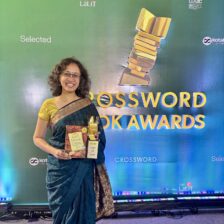Yesterday’s guest session was full of stories! While we are familiar with Long John Silver and Davy Jones’s locker, how many of us are equally familiar with Kanhoji Angre and the pirates of the Malabar?
We began with a discussion of myths, legends, and historical fiction, and this, I think, is an important idea that is well worth repeating. A myth is not history or historical fiction. It is a story created by human beings in an attempt to make sense of the world. Even if a myth helps us understand something about the time when it was created, it isn’t a true tale.

A legend is not true either! My mother, Dr Radhika Seshan, told us the story of the emperor Jahangir and his bells of justice. Legend says that a donkey rang one of the bells one day, and Jahangir proclaimed that a donkey deserves justice too. Is the story true? We have no idea, but legends are often built around people who slowly, through stories, emerge as beings larger than life.
What, then, is historical fiction?
Historical fiction has a very sound foundation in fact, based on evidence. This is what makes it difficult to write. If we write about Kanhoji Angre or Ram Koli, we need to understand their times and set our stories accordingly. We need to know about the boats they used and where they lived. We cannot make them use Mediterranean ships! We also cannot change the course of history.
What, then, can we, as writers, imagine? We can imagine their conversations. We can imagine what went on in their heads. Kanhoji Angre was clearly a strategist. How would he have planned his course of action? Would he have been afraid the night before an attack? Or excited? The emotional and mental aspects are ours to play with.
I’ve given the children who attended the workshop a couple of writing assignments based on yesterday’s session. I can’t wait to read them; I’m sure they’ll be fun!
Mark your calendars – the next workshop is on illustration and will be conducted on the 19th of June! More details as soon as I open for registration.

Leave a Reply